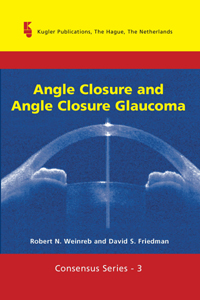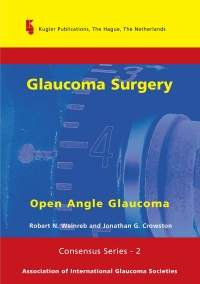WGA Consensus Meetings
Publications
| Consensus Series 3
Angle
Closure and Angle Closure Glaucoma, edited by By: R.N. Weinreb
& D.S. Friedman
|

|
Publication year: 2006. xiv and 98 pages with
59 figures of which 3 in color, 1 table. Hardbound.
ISBN
10: 90-6299-210-2 ISBN 13: 978-90-6299-210-2
€
45.00 / US $ 56.00
Available at your local bookstore and
directly from the publisher.
Click here for details
On IGR web:
3rd WGA Consensus
Meeting statements: Angle Closure and Angle Closure Glaucoma
|
| Consensus Series 2
Glaucoma
Surgery: Open Angle Glaucoma, edited by Robert N. Weinreb
and Jonathan G. Crowston
|

|
Publication year: 2005. xiv and 140 pages with 9 tables and
2 figures, of which 1 in full color Hardbound.
Kugler Publications, The Hague, The Netherlands.
ISBN
10: 90-6299-203-X ISBN 13: 978-90-6299-203-4
€
50.00 / US $ 60.00
Available at your local bookstore and
directly from the publisher.
Click here for details
On IGR web:
2nd WGA Consensus
Meeting statements: Glaucoma Surgery: Open Angle Glaucoma
|
| Consensus Series 1
Glaucoma
Diagnosis. Structure and Function, edited by Robert.N. Weinreb
& Erik. L. Greve
|

|
Publication year: 2004. viii and 152 pages with 17 figures,
of which 12 in full color, and one table. Hardbound.
Kugler Publications, The Hague, The Netherlands.
ISBN
10: 90-6299-200-5 ISBN 13: 978-90-6299-200-3
€
50.00 / US $ 60.00
Available at your local bookstore and directly
from the publisher.
Click here for details
|

